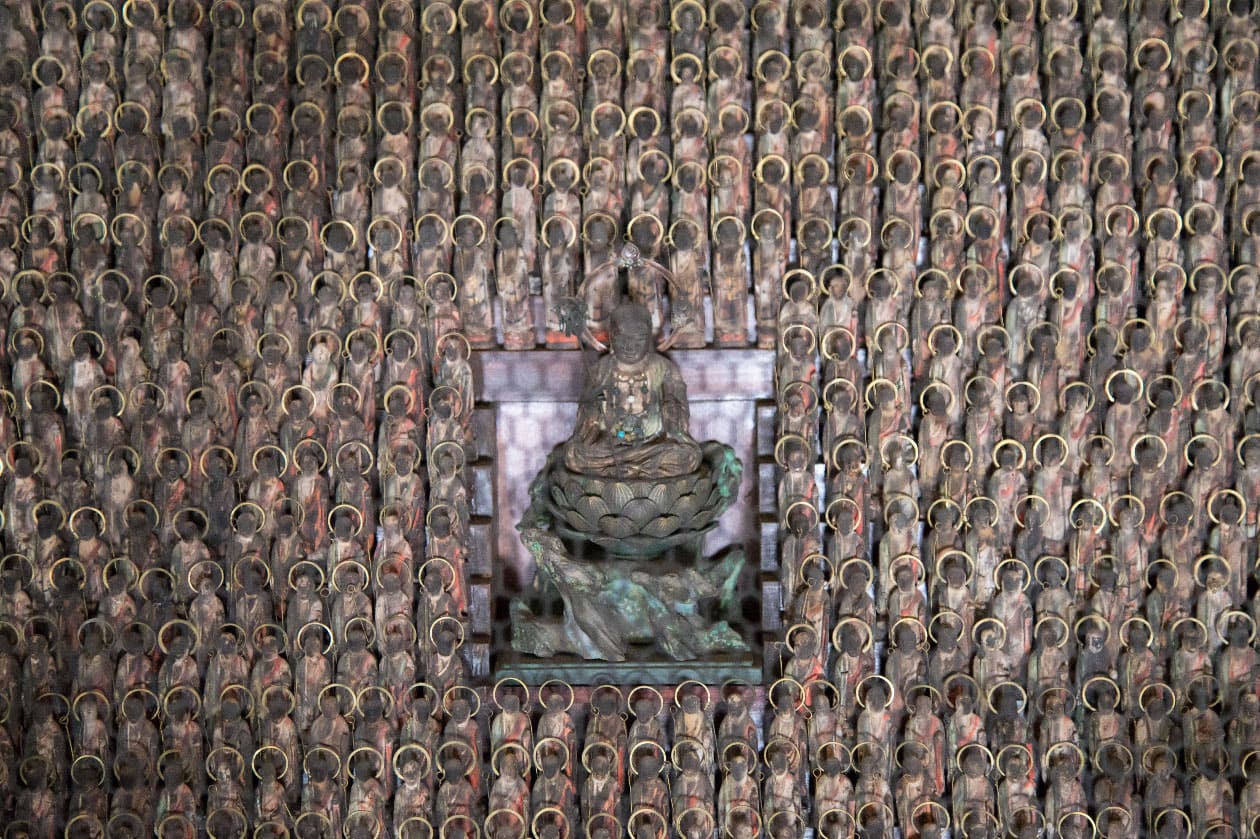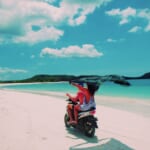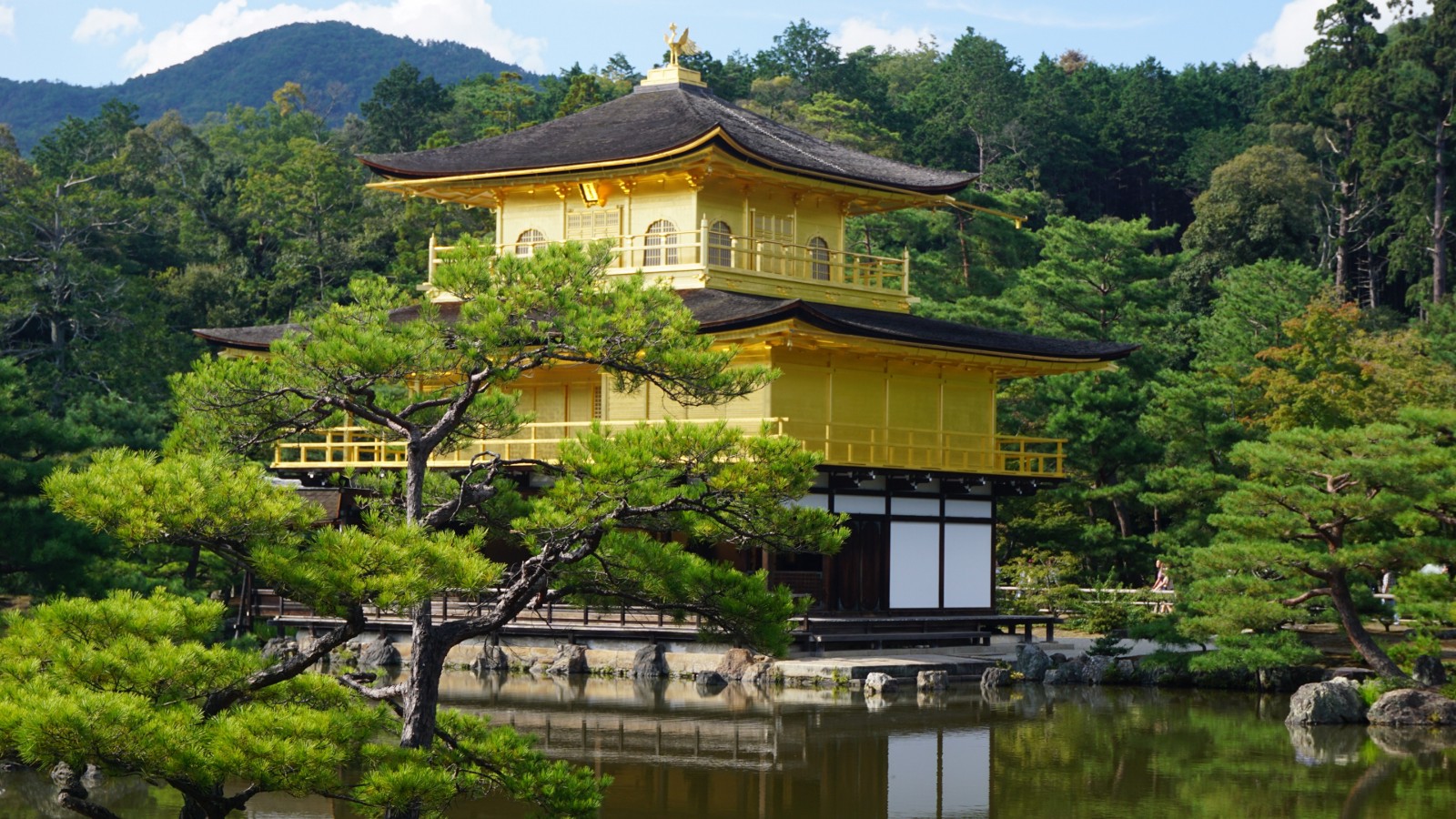Ginkakuji Temple: Silver Pavilion in Kyoto
Kyoto Ginkakuji Temple: Must-Visit Temple in Kyoto

Ginkakuji Temple is now one of the top tourist sites in Kyoto and designated as a UNESCO World Heritage Site as a part of the Historic Monuments of Ancient Kyoto. Along with the Silver Pavilion, the temple is also known for the beautiful Japanese garden which displays the stunning scenery in each season.
What is Ginkakuji?
Ginkakuji (銀閣寺) is a Zen temple located in northwest Kyoto City. The official name of the temple is Higashiyama Jisho-ji (東山慈照寺), but it’s also known as “Temple of the Silver Pavilion”.
Ginkakuji was built in 1490 during the Muromachi period by the shogun Ashikaga Yoshimasa as his retirement villa, modeled after Kinkakuji Temple (Golden Pavilion) which was built for his grandfather Ashikaga Yoshimitsu in 1397.
Originally it was intended to cover the temple with silver foil just like Golden Pavilion did with gold one, but seemingly the plan was never carried out. After Yoshimasa’s death, the villa was converted into a Zen temple. As a result, the temple has been called Ginkakuji which means the Silver Pavilion even though it’s not really silver.
What to See and Do at Ginkakuji
While it lacks the lustrous adornment of its more famous counterpart, Kinkakuji, Ginkakuji’s understated elegance and harmonious gardens embody the refined aesthetic of the Higashiyama culture. Here’s what to look out for during your visit.
The Silver Pavilion (Ginkaku)
The main structure, known as Kannon-den, was initially designed as a retirement villa for Ashikaga Yoshimasa, the 8th shogun of the Muromachi period, and later converted into a Zen temple. While it was intended to be covered in silver leaf, this plan was never realized, leaving the wooden façade unadorned—a testament to the simplicity of wabi-sabi aesthetics.
Togudo Hall

Togudo is one of Japan’s oldest examples of shoin-zukuri architecture, a style that influenced traditional Japanese houses and tea rooms. Inside, the Dojinsai room is regarded as one of the first dedicated tea rooms in Japan, reflecting the birth of the Japanese tea ceremony.
The Dry Sand Garden (Ginshadan)
One of Ginkakuji’s most iconic features, Ginshadan (銀沙灘), or the “Sea of Silver Sand,” is a meticulously raked Zen garden. The centerpiece of this garden is the cone-shaped mound called Kōgetsudai (向月台), which is said to symbolize Mount Fuji and reflects moonlight at night. Visitors are often mesmerized by the precision and artistry of the sand arrangements.
The Moss Garden
Ginkakuji’s moss garden is a tranquil space with winding paths, small ponds, and lush green moss covering the ground. This garden is designed to evoke the beauty of nature, with each element—stones, trees, and water—carefully placed to create harmony. Key highlights include:
- Streams and Bridges: Gentle streams flow through the garden, crossed by small, elegant bridges.
- Seasonal Flora: Depending on the time of year, visitors can enjoy seasonal plants like irises and autumn foliage.
The Scenic Trail
After exploring the lower grounds, follow the path that leads up the hill behind the temple. This short trail offers panoramic views of Ginkakuji, its gardens, and the surrounding Higashiyama mountains. On clear days, you can see Kyoto city stretching out in the distance.
Temple Art and Artifacts

While the buildings themselves are minimalist, Ginkakuji houses valuable cultural treasures that reflect the artistic sensibilities of the Muromachi period.
How to Get to Ginkakuji
Map
Access
Approx. 20-min bus from Mototanaka Station, or 35-min bus from Kyoto Station
Address
2 Ginkakujicho, Sakyo Ward, Kyoto, 606-8402
Business Hours
8:30 – 17:00 (summer) / 9:00-16:30 (winter)
Price
500 yen
Official Website
http://www.shokoku-ji.jp/g_about.html
Tourist Reviews of Ginkakuji

Ginkakuji, also known as the Silver Pavilion, is celebrated for its understated elegance, serene gardens, and cultural significance. With a Google rating of 4.5 (14,303 reviews), a TripAdvisor score of 4.5 (4,675 reviews), and a Yelp rating of 4.4 (33 reviews), this Zen temple offers visitors a tranquil escape from the busy streets of Kyoto.
On TripAdvisor, one visitor recounted their autumn visit:
“We stayed in central Kyoto and got a train to the nearest station, Kitaoji, and caught a taxi to the site. It is very crowded, but as you walk only one way, it makes it much easier to walk with the flow. We were there in autumn, and it was just outstanding—the vistas and the gardens. Recommend getting there early before the crowds. It takes a good couple of hours to meander around the site and perhaps buy a few souvenirs on the way out. 100% a site to see.”
―from TripAdvisor
A Yelp reviewer described their visit during a rainy day:
“It was drizzly the day we ventured here, but we had a great time. One of my favorite temples because it’s set up against the mountains and it’s very peaceful. We took a cab here, and it dropped us off at the base of the hill.
The cherry blossoms were in bloom at the Philosopher’s Path, though muted by the rain. As others said, there are a number of shops from the main street up to the pavilion, with everything from ice cream to potatoes on a stick to really cute doll crafts.”
―from Yelp
Whether it’s the iconic sand gardens, the lush greenery, or the charming shops along the way, Ginkaku-ji provides a harmonious blend of natural beauty and cultural heritage, leaving visitors with a sense of calm and admiration.
↓↓↓For more articles about Japan, check these links!! ↓↓↓
Written by
"The world is my oyster." As a dedicated globetrotter and hammock enthusiast, I’ve spent years chasing new experiences, collecting stories, and discovering the world’s most incredible destinations. Born and raised in Japan, I’ve always had a deep connection to my roots, but my love for adventure has led me to spend over a decade exploring countries across the globe—from culture-rich cities to remote hideaways.
Travel isn't just a hobby for me; it's a lifestyle. I'm constantly searching for new ways to fuel my wanderlust. Over the years, I’ve developed a wealth of knowledge and a treasure trove of tips that make traveling more enjoyable, practical, and meaningful.
Through my experiences, I've come to appreciate not only the beauty of travel but also the importance of understanding diverse cultures, embracing the unfamiliar, and stepping out of my comfort zone. My travels have shaped who I am today, and I’m excited to share those lessons with others.
With Japan Web Magazine, I aim to offer practical advice, insider tips, and firsthand stories that help travelers navigate their journeys to Japan or setting off on a global adventure. From hidden gems in Japan to travel hacks that make any trip smoother, I hope my insights inspire you to embark on your own adventures and make the most of every moment. Let’s explore the world together!
You can also find my stories here ▶ https://medium.com/@nahobm











